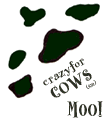|
|
|
|
|
|
|
Yogurt:
- Yogurt is also spelled yoghurt or yoghourt.
- It is a fermented milk food that can have a semifluid or custardlike texture.
- It has a sour flavor due to its lactic acid content.
- Cow's milk is the primary milk used for yogurt in the United States and north-central Europe.
- Yogurt can be made from the milk of sheep, goats, or water buffalo, too.
- Yogurt may have originated in Turkey.
- It is made in Turkish homes by boiling milk in an uncovered pan to sterilize it and reduce the water
content. When the milk is cooled, it is inoculated with a little yogurt made previously, and then
it is incubated for a few hours. It is slowly cooled to room temperature before use.
- Commercial dairies often add milk solids to cow's milk to make yogurt with a thicker, custardlike
consistency.
- Concentrated, sterilized milk is inoculated with certain bacteria, including
Streptococcus thermophilus and Lactobacillus bulgaricus.
- Sometimes Lactobacillus acidophilus, other bacteria, or lactose-fermenting yeast is added.
- The inoculated milk is incubated 4 - 5 hours at about 110 degrees, Fahrenheit, until a curd forms.
- Yogurt may be sweetened and/or flavored.
- Natural yogurt may be mixed with fresh fruits or vegetables.
- Yogurt is known and consumed in almost all parts of the world.
Source: Encyclopedia Brittanica online at http://www.brittanica.com,
entry Yogurt.
|
|



